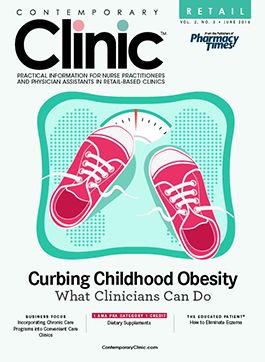Telehealth in Retail Clinics Is the Future of Medicine
MinuteClinic recently sealed a deal to allow patients in Ohio to virtually visit Cleveland Clinic clinicians through American Well’s telehealth platform.
MinuteClinic recently sealed a deal to allow patients in Ohio to virtually visit Cleveland Clinic clinicians through American Well’s telehealth platform. This partnership is significant because it’s the first time Cleveland Clinic providers will be available to MinuteClinic customers via telemedicine.
To echo the words of American Well Chairman and CEO Ido Schoenberg, MD, “This is the future of telemedicine—or simply, medicine.”
Telemedicine is a perfect union between technology and health care. It has been praised as a cost-effective method for clinicians to examine, diagnose, and manage patients’ medical conditions in a way that transcends time and distance.
As practical evidence that telemedicine isn’t a passing phase but here to stay, MinuteClinic already boasts 1000 locations offering telehealth services in 32 states, and by next year, that number of sites is expected to grow to 1500. Moreover, in a recentContemporary Cliniconline poll, the majority of our readers believed that more retail clinics should provide telehealth referrals to other clinicians.
Using MinuteClinic’s new partnership with the Cleveland Clinic as an example, here’s how telehealth referrals work in the retail clinic setting. When a MinuteClinic practitioner is seeing a patient and deems it necessary for the patient to consult a primary care clinician at Cleveland Clinic for nonemergency urgent care needs, a virtual visit for this purpose can be arranged in about 5 to 10 minutes during working hours, although the health system is also looking to set up around-the-clock access. Patients can expect to pay about $50 for a mobile consultation, on top of the cost of seeing a MinuteClinic practitioner.
The results of a recent Oliver Wyman survey indicate that the use of telehealth visits has increased from 35% in 2013 to 45% in 2015, while retail clinic use has risen from 15% to 26% in the same 2-year period. Between their flexible scheduling and typically lower costs, telemedicine and retail clinics both have an enormous amount of potential to deliver care to hard-to-reach patient populations and boost patient engagement. Continued efforts to combine these 2 care models could only certify a bright future for the field of medicine.
Thank you for reading!
Mike Hennessy
Chairman and CEO

Knock Out Aches and Pains From Cold
October 30th 2019The symptoms associated with colds, most commonly congestion, coughing, sneezing, and sore throats, are the body's response when a virus exerts its effects on the immune system. Cold symptoms peak at about 1 to 2 days and last 7 to 10 days but can last up to 3 weeks.
COPD: Should a Clinician Treat or Refer?
October 27th 2019The Global Initiative for Chronic Obstructive Lung Disease (GOLD) defines the condition as follows: “COPD is a common, preventable, and treatable disease that is characterized by persistent respiratory symptoms and airflow limitation that is due to airway and/or alveolar abnormalities usually caused by significant exposure to noxious particles or gases.â€
Diabetic Ketoacidosis Is Preventable With Proper Treatment
October 24th 2019Cancer, diabetes, and heart disease account for a large portion of the $3.3 trillion annual US health care expenditures. In fact, 90% of these expenditures are due to chronic conditions. About 23 million people in the United States have diabetes, 7 million have undiagnosed diabetes, and 83 million have prediabetes.
What Are the Latest Influenza Vaccine Recommendations?
October 21st 2019Clinicians should recommend routine yearly influenza vaccinations for everyone 6 months or older who has no contraindications for the 2019-2020 influenza season starting at the end of October, according to the Advisory Committee on Immunization Practices.
What Is the Best Way to Treat Pharyngitis?
October 18th 2019There are many different causes of throat discomfort, but patients commonly associate a sore throat with an infection and may think that they need antibiotics. This unfortunately leads to unnecessary antibiotic prescribing when clinicians do not apply evidence-based practice.
